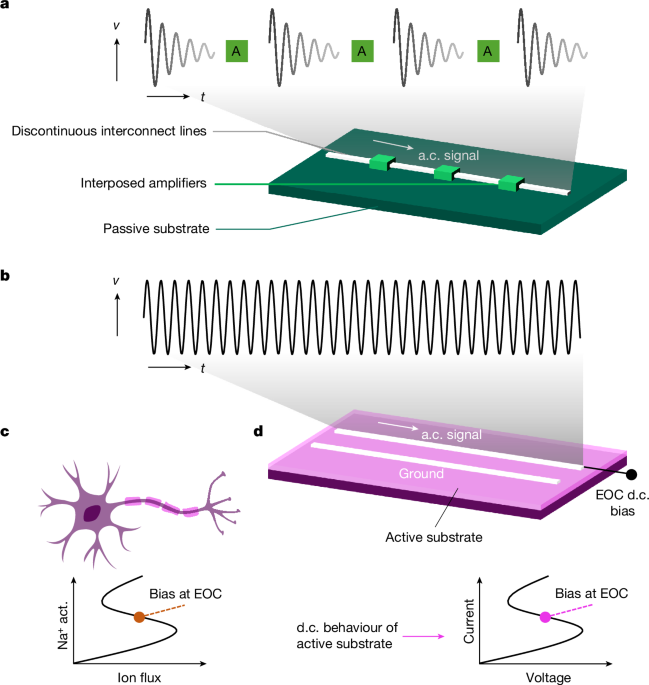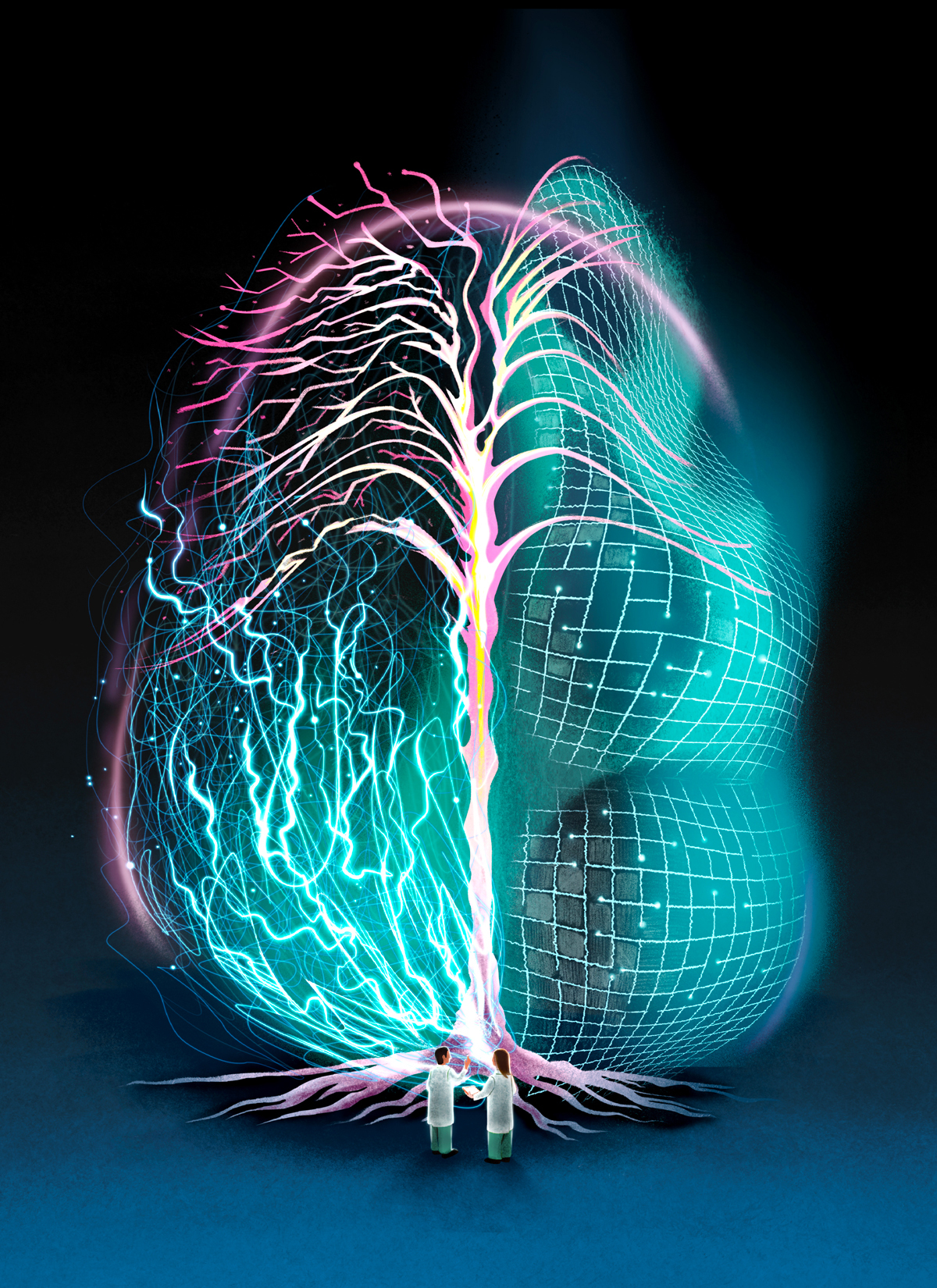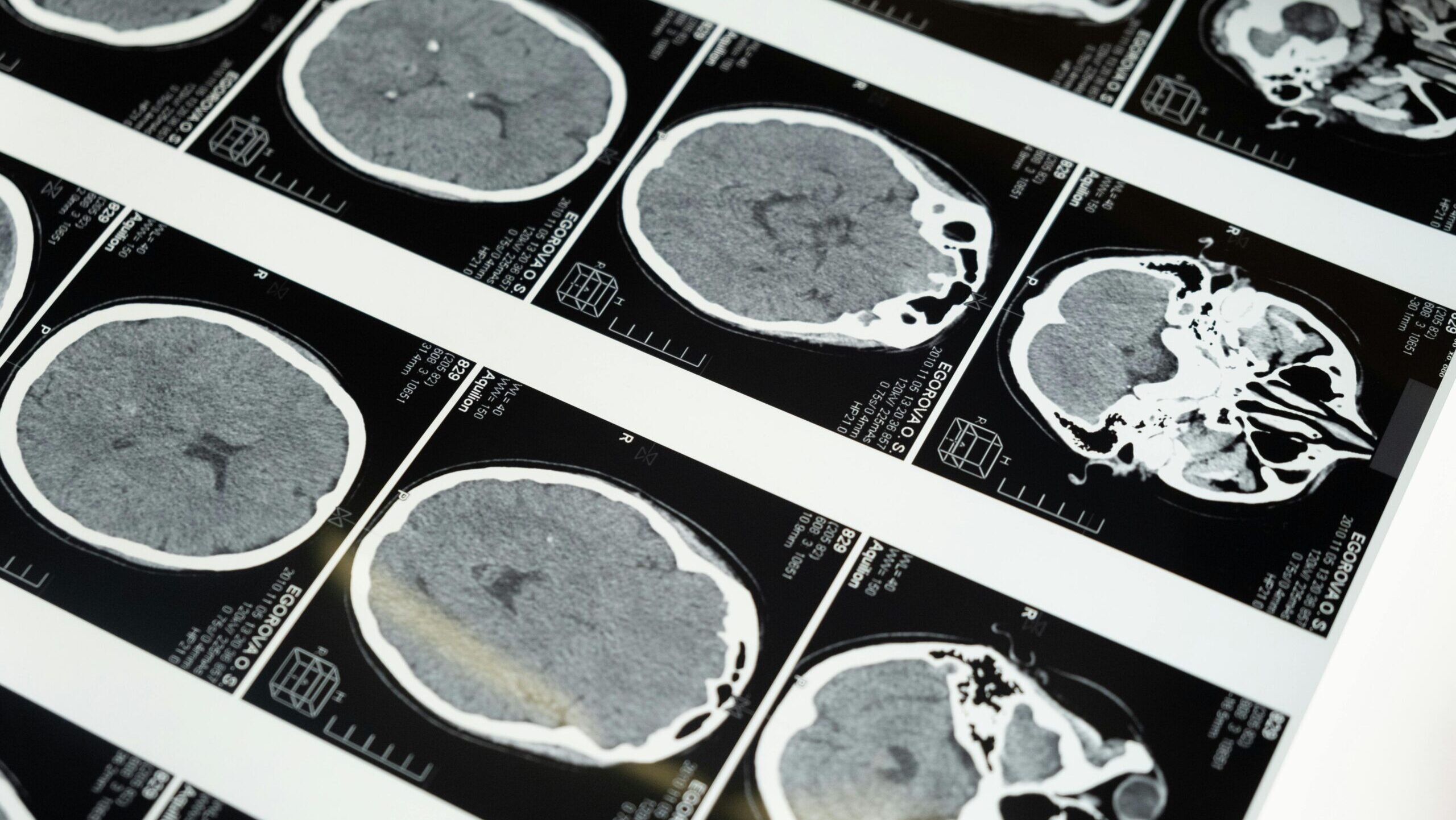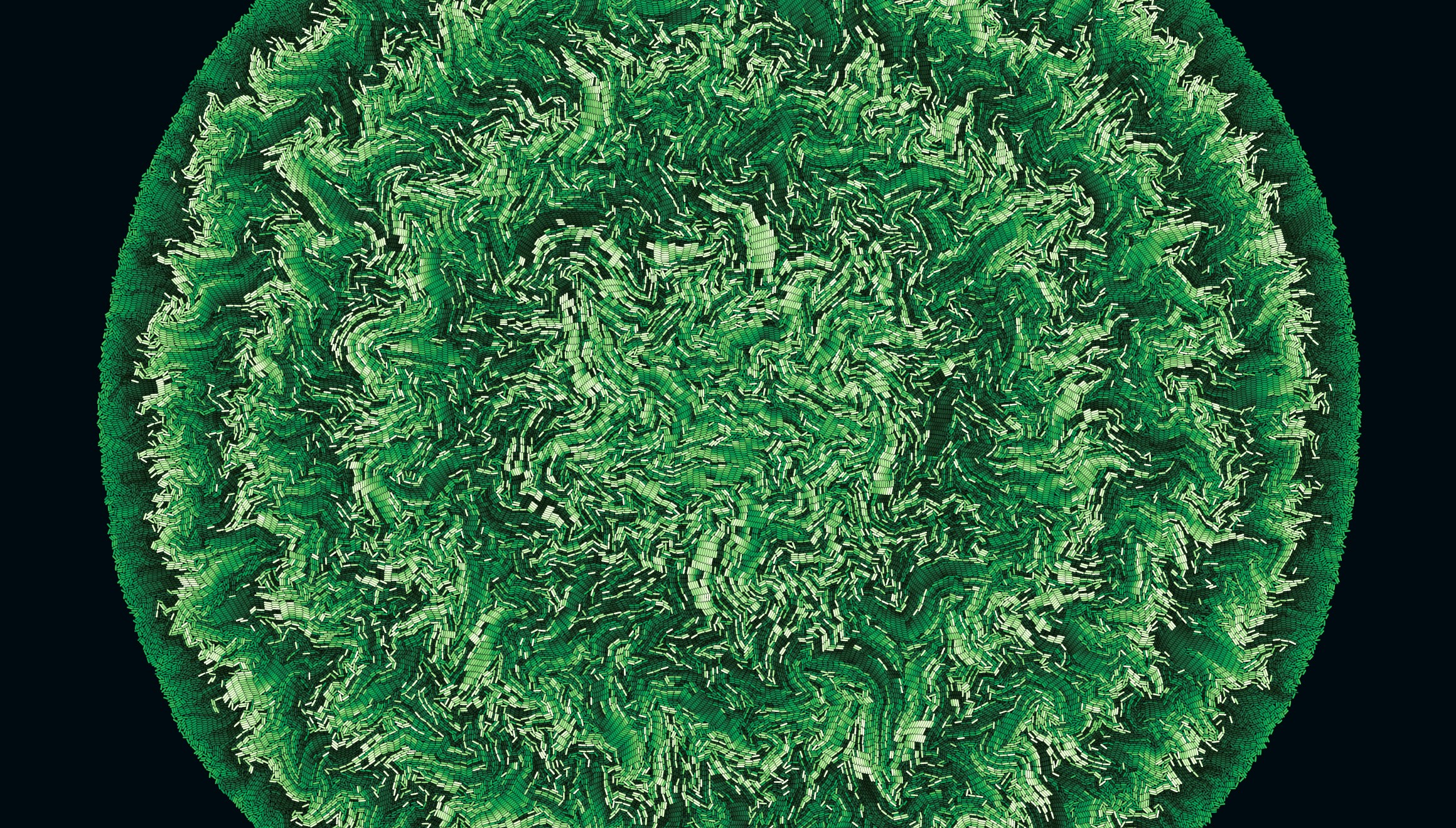
Axon-like active signal transmission
Nature volume 633, pages 804–810 (2024 )Cite this article
Any electrical signal propagating in a metallic conductor loses amplitude due to the natural resistance of the metal. Compensating for such losses presently requires repeatedly breaking the conductor and interposing amplifiers that consume and regenerate the signal. This century-old primitive severely constrains the design and performance of modern interconnect-dense chips1. Here we present a fundamentally different primitive based on semi-stable edge of chaos (EOC)2,3, a long-theorized but experimentally elusive regime that underlies active (self-amplifying) transmission in biological axons4,5. By electrically accessing the spin crossover in LaCoO3, we isolate semi-stable EOC, characterized by small-signal negative resistance and amplification of perturbations6,7. In a metallic line atop a medium biased at EOC, a signal input at one end exits the other end amplified, without passing through a separate amplifying component. While superficially resembling superconductivity, active transmission offers controllably amplified time-varying small-signal propagation at normal temperature and pressure, but requires an electrically energized EOC medium. Operando thermal mapping reveals the mechanism of amplification—bias energy of the EOC medium, instead of fully dissipating as heat, is partly used to amplify signals in the metallic line, thereby enabling spatially continuous active transmission, which could transform the design and performance of complex electronic chips.
Because modern electronic chips strive to pack more components per unit area, interconnects are becoming longer, narrower, lossy and more densely packed1,8,9. Nearly a decade ago, the delays associated with resistive–capacitive losses across interconnects exceeded the latencies of transistor-based switches10. In prevailing solutions to address the increased losses and delays, transmission lines are broken into smaller lengths, with carefully designed distributed layouts of complementary metal–oxide–semiconductor buffers and drivers interposed in the signal path8 (Fig. 1a). Research trends, especially those in post-silicon technologies, point towards new low-loss interconnect materials, such as carbon nanotubes and two-dimensional materials separated by insulators with low dielectric constants11,12,13,14. However, these solutions still require transmission to be spatially broken to accommodate amplifiers, buffers and repeaters, leading to restrictive, time-consuming and expensive chip design, as well as the degradation of chip-level performance.



















